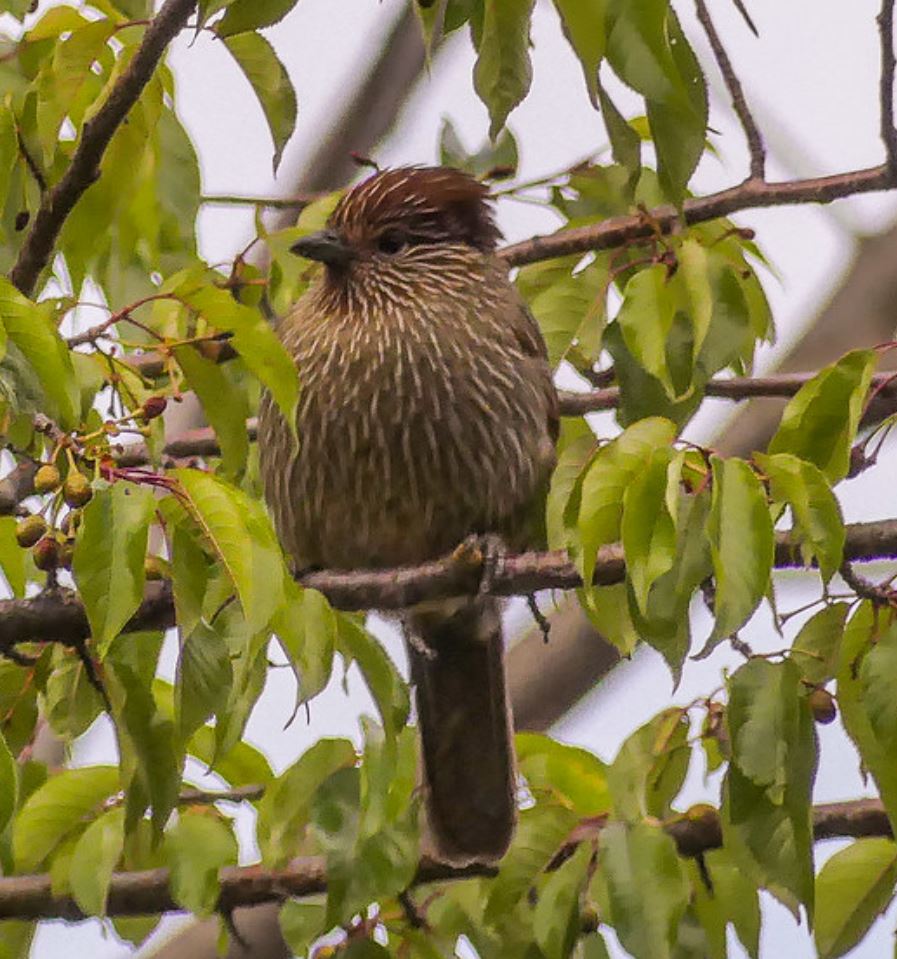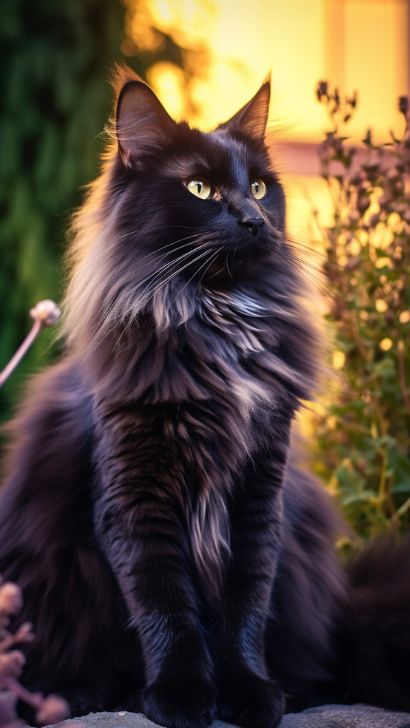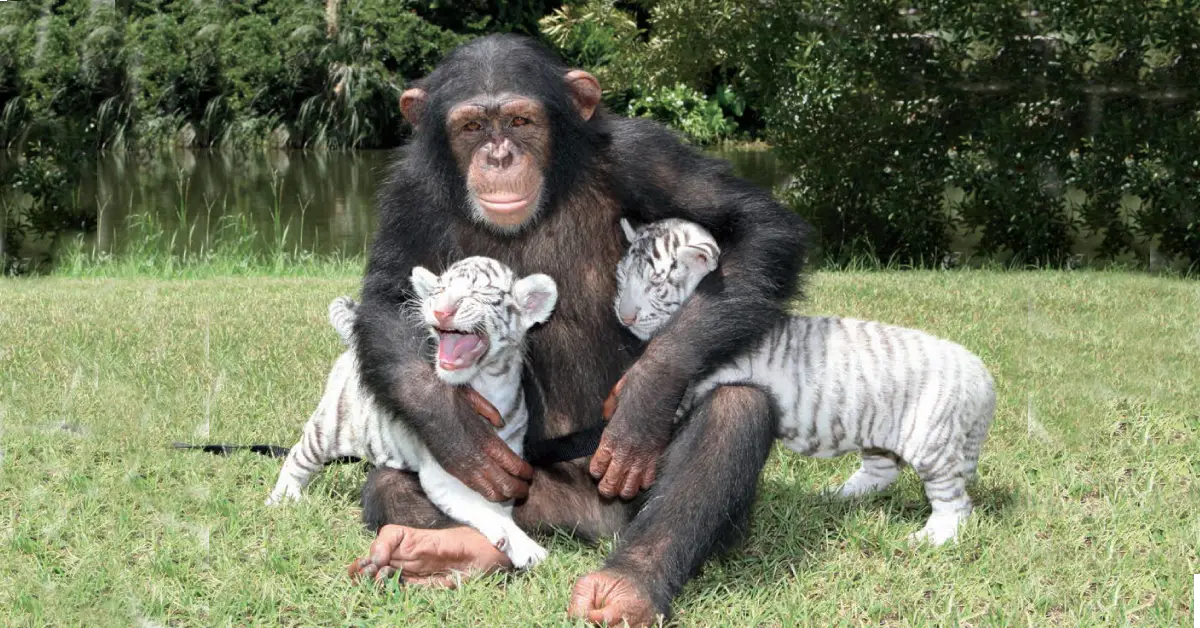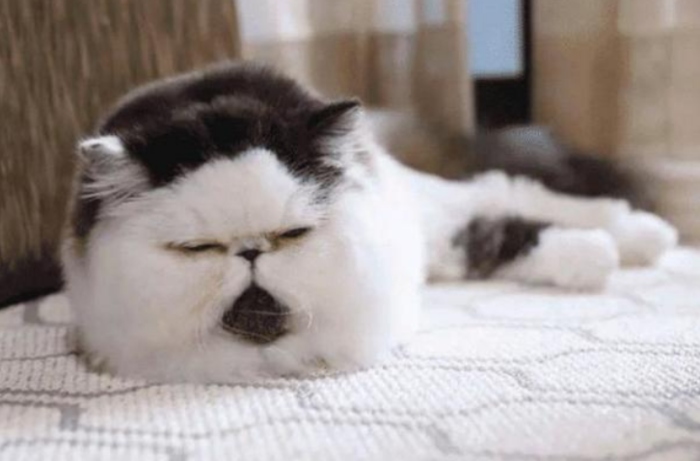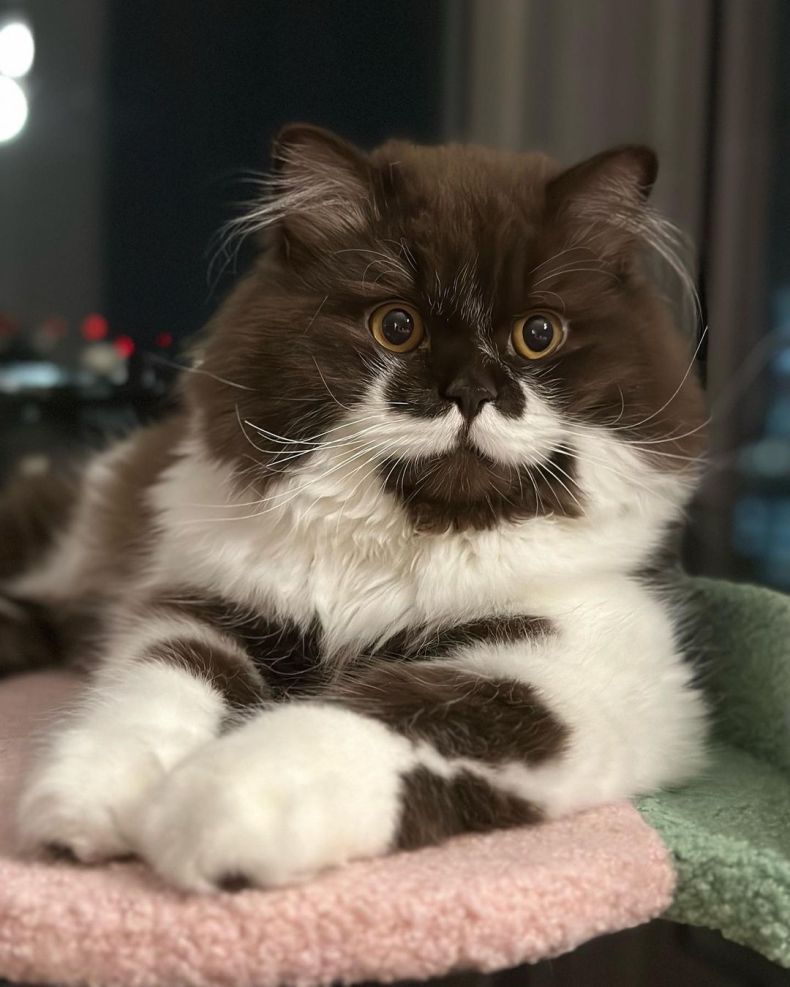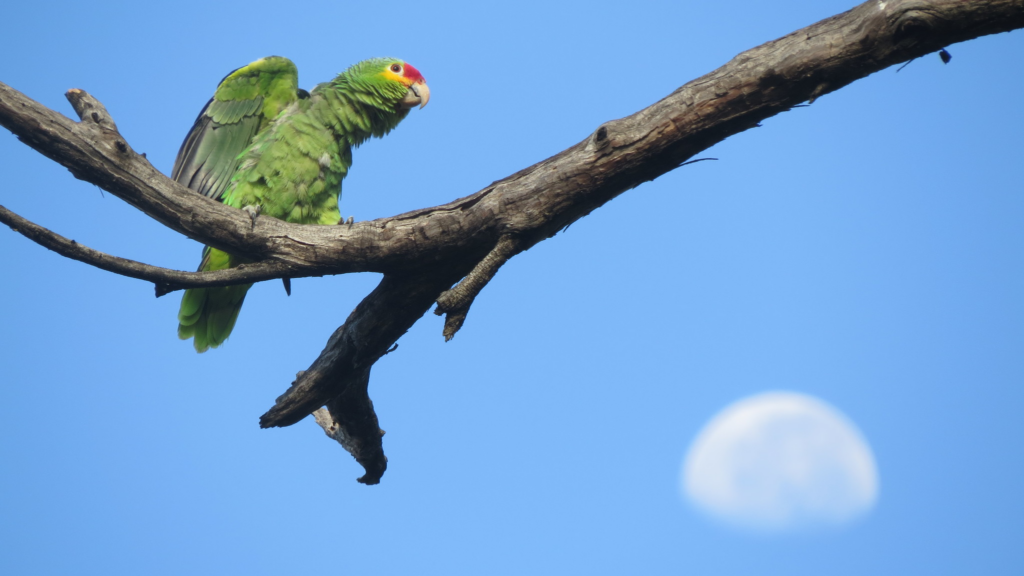Gene Roddenberry, creator of Star Trek, was asked why, with so much advanced technology in the TNG series, Captain Picard was still bald. He replied that in the future, nobody would care. This was, of course, after trying to get Sir Patrick Stewart to wear a wig for the show and realising it would look ridiculous.
Baldness is still something we care about quite a lot in the relentless present, and hair loss treatments are a billion-dollar industry. But aside from vanity, hair in the animal kingdom serves many purposes.
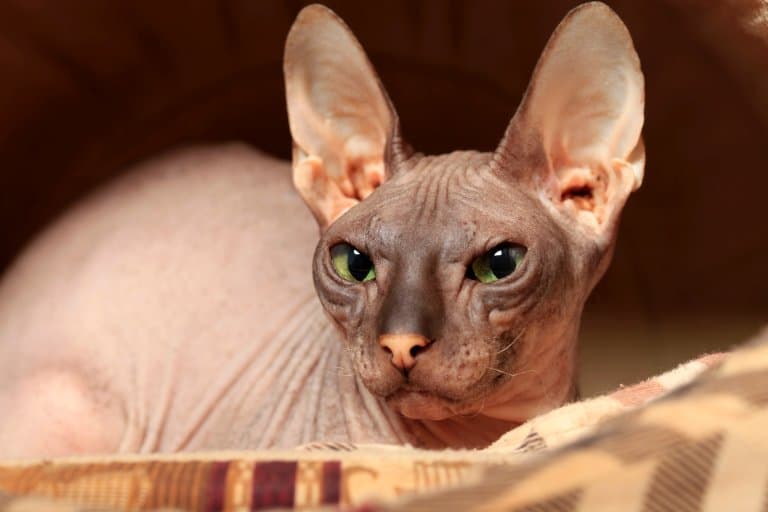
One of the defining characteristics of mammals is their hair. Even animals that look sleek and shiny, like dolphins, are born with hairy noses. Other classes of animals have hairs, too. Caterpillars are fuzzy due to elongated filaments of chitin; Mary River turtles have a green cluster of algae that gives them an anti-establishment look.
Other animals have feathers or scales in place of hair, often made up of similar structural proteins.
Hair, in its various forms, helps keep things warm or dry. It can be excellent armour or a way of signalling to another that you’re in charge. It can be a species identifier in groups of animals who otherwise look very alike, and it can be used to navigate in worlds where there isn’t much light. Some animals use irritating hairs to remind you not to lick them.
Hair comes in many forms, but in some animals, it’s conspicuously absent. The environment throws up some scenarios where hair would just get in the way, and evolution responds by jettisoning it. In other situations, rare disorders or allergic reactions can cause an otherwise hairy animal to lose its coat, showing us the terrifying reality of their true form.
At the risk of getting slapped by Will Smith, we’re going to acknowledge hairless and bald animals in the Animal kingdom in a light-hearted, yet, respectful way, and try not to gawk at some animals who should have hair, but don’t and others who do quite well without it.
10. Hairless Chimp
We’re going to kick off with a classic. In February 2022, the Public Religion Research Institute revealed the percentage of American QAnon believers increased to 17%. This is (perhaps coincidentally) the same percentage of Americans who believe they could beat a chimpanzee in a bare-knuckle brawl.
We’d like to think these people haven’t seen the hairless chimp Mongo Twycross Zoo in England, but something tells us these people don’t respond much to evidence anyway.
Mongo was the son of an equally hairless chimp, the recipient of an inherited form of alopecia that left his true physique on full display. Both male chimps lost their coat when they went through puberty, but were otherwise healthy and still respected in their social circles.
Male chimps get heavily dosed with testosterone at around 15 years old, which is associated with increased muscle mass, as it is with humans, but not increased aggression, and in Mongo and his father, you can really see where it goes.
Sadly, Mongo died recently after a routine checkup and was not able to recover from the anaesthetic. 1
9. Hairless Baboon
A fantastic example of the trend in entirely random couplings of music to videos comes from a clip of a baboon, witnessed in the wild, seemingly with a very similar condition to Mongo and his father.
Baboons are the largest monkey species we’ve got but it’s very clear from this footage from Botswana of a bald Chacma baboon, that the other 83% of Americans would fare much better in a fight against one than against a chimp.
Again, this is a mammal whose hair loss comes from a malfunction in their physiology, rather than as an evolutionary advantage, but the fact that these animals are apparently thriving does show that it’s not a huge handicap. 2
8. Lowland Streaked Tenrec
The first of our animals that’s supposed to be balding is a small, funny little thing called a tenrec. This is also the least bald of all the animals, and would better be described as a young Jarl Varg: “getting a little thin, up top”.
That’s because this small earthworm specialist from Madagascar is partway between a shrew and a hedgehog.
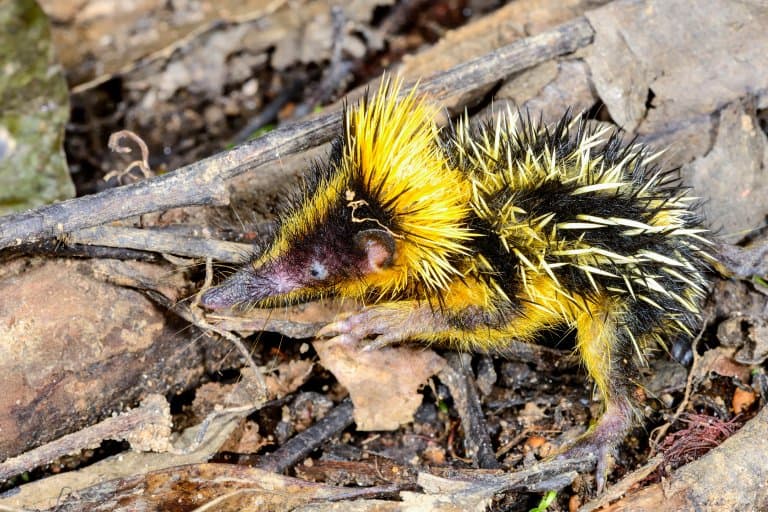
Tenrecs represent a peculiar order that’s a remnant of a much larger group of African mammals, now extinct. In this species, many of its hairs have evolved into sensory quills, like those of a porcupine, which help the little creature navigate its environment, communicate with its friends, and ward off predators.
These quills can be rubbed together or vibrated, which is probably quite scary, but apparently doesn’t prevent humans from eating them. Still, as far as Madagascan mammals go, they’re doing pretty well.
7. White-bellied Pangolin
Pangolins are another mammal that you wouldn’t quite call bald, though they are relatively hairless.
While Asian species have small hairs between their scales, the white-bellied pangolin, as an African species, is distinctively lacking in this regard. Pangolins are arboreal, scaled anteaters, and very sweet animals whose unique scales have led to rampant persecution and their notoriety as the most trafficked animal in the world.
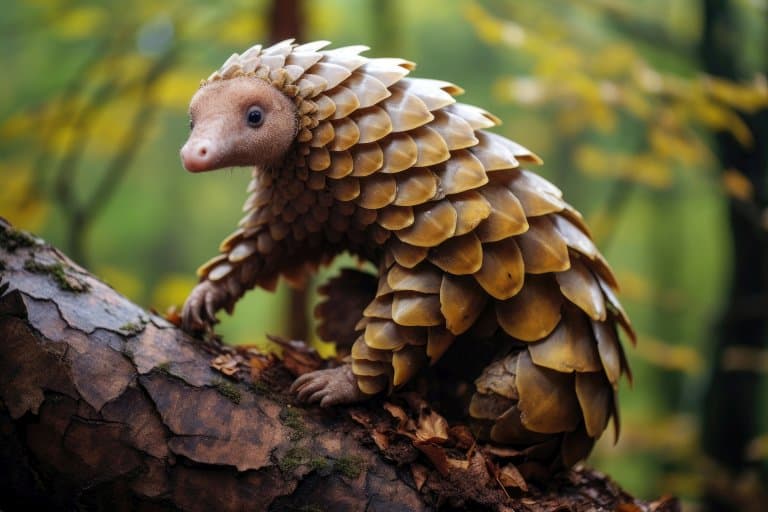
But like the hairs and quills and fingernails of other mammals, these scales are simply another arrangement of keratin fibres, with no magical or medicinal value.
Males and females look more or less the same, and both weigh somewhere between one and three kilograms. Their prehensile tails are longer than their bodies and serve multiple functions, as a fifth limb, even featuring a bald, rubbery gripping surface for holding a pen.
Sadly, this is an endangered species with a decreasing population due to a plethora of wealthy airheads who create the demand for their body parts. 3
6. Northern Bald Ibis
Finally, a true baldy! Many Ibis species (I’m looking at you, Hadada) have the highest ratio of face-to-voice cuteness in the Aves order. The Northern Bald Ibis has attempted to address this by rounding off at both ends of the spectrum.
They have neither a pretty face nor an annoying voice, but they retain the visual grace of the ibis’s line, at least when flying.
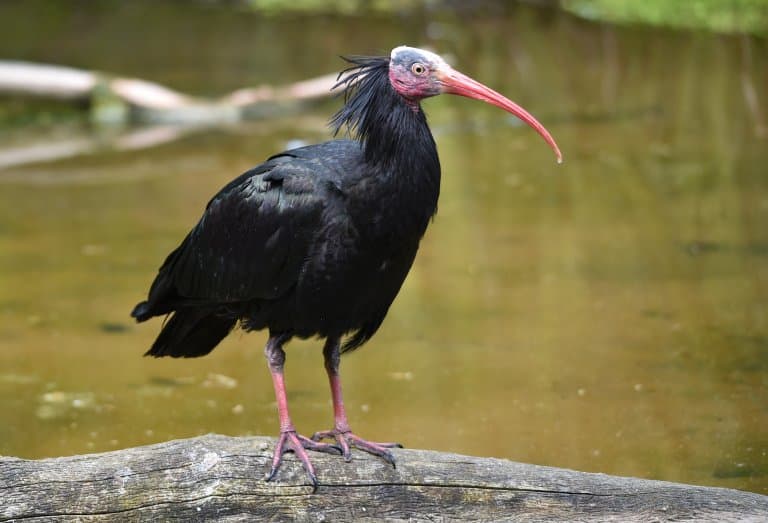
These are medium-to-large birds, once widespread across the Middle East, northern Africa, and southern and central Europe, but were extinct in Europe by 300 years ago. However, they’re a strong candidate for reintroduction, so we may see them returning to their former glory eventually.
Bald ibis eat more or less anything animal-related. Its long beak is a precision instrument used for probing loose soils and can be 135mm long. It’s situated on a bald-looking face, the purpose of which is unclear.
It’s likely that this bird has reduced fluff as a way of preventing their faces from getting dirty when they’re probing about for food, but coupled with the ruff of feathers around the neck, it’s a very contrasting image, so it could play more of a role in communication or mating.
5. Bald Uakari
Coming back to our simian cousins, we come to a monkey whose baldness isn’t the result of a disease, but an established genetic trait.
These small, South American monkeys won’t win any beauty contests but they are very distinctive. Their shaggy coat is contrasted by a bald, bright red face, much like that of a London pub landlord who’s just taken the stairs a bit too fast.
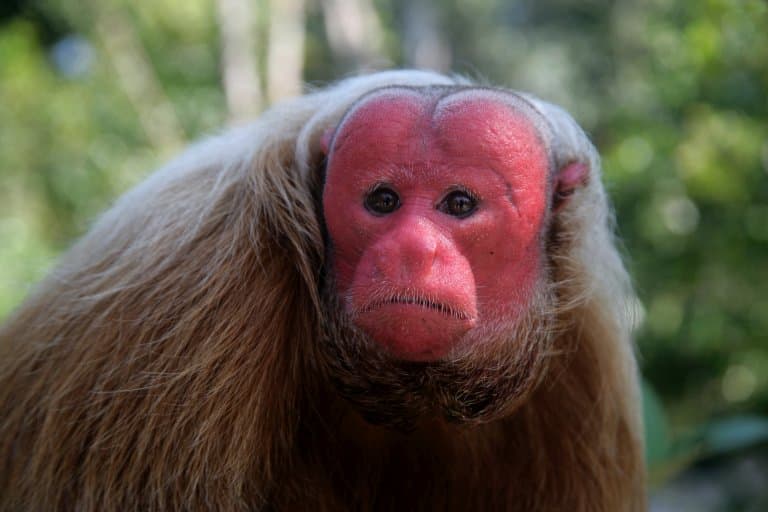
In fact, uakari would look right at home on the set of EastEnders, underbite and all, though they’re not nearly as loud when communicating with one another.
And unlike in Londoners, the bright red face is a sign of fitness and plays a role in mate selection. One common ailment in their populations is malaria, something which makes their faces go pale and leads to them being rejected.
They’re largely herbivorous but will take advantage of an insect snack here and there, and they travel quite far for a monkey of this size, moving up to 3km in a day on their foraging patrols.
4. Naked Mole Rat
This one has become a legal requirement for hairless animal lists worldwide and is begrudgingly thrown in to avoid the torrent of hate mail we’d get if we left it out.
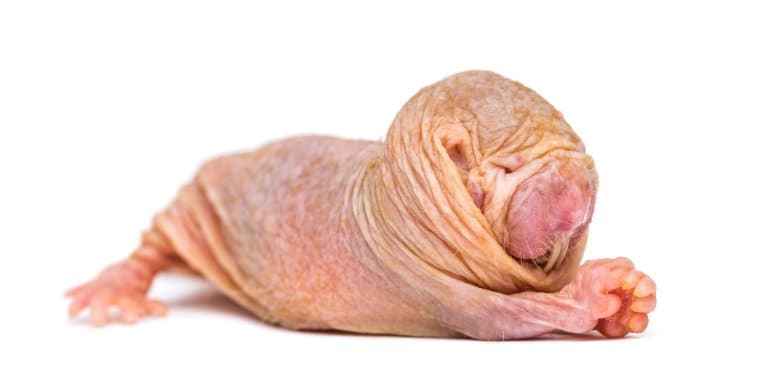
Mole rats aren’t rats, neither are they moles. And to be fair to the ugly little beasts, they are fascinating animals in their own right and deserve to be on any number of other lists before they make it to the freakshow curations.
Naked mole rats are indeed rodents, but like none other on Earth. The list of cool features these strange-looking animals have is too long to fit here, but here are some highlights:
- Their body temperatures adjust to their environments – this is unheard of in mammals!
- They are eusocial, or colony animals (like ants). Again, unheard of in mammals
- They have a single reproductive female, or queen (like ants)
- They don’t have pain receptors in their skin
- They live for a bazillion years (longer than any other rodent)
- They are immune to capsaicin
- They are almost immune to cancer
But of course, the thing everyone remembers is that they’re bald.
3. North Sulawesi Babirusa
This pig has the most chantable name in the animal kingdom and would pair well with stereotypical tribal drums in an Incan human sacrifice setting. Go ahead, try it.
Babirusas are some of the most unfortunate animals in the looks department, and along with teeth even the British would baulk at, they’re also almost entirely bald, aside from a little tail tuft.
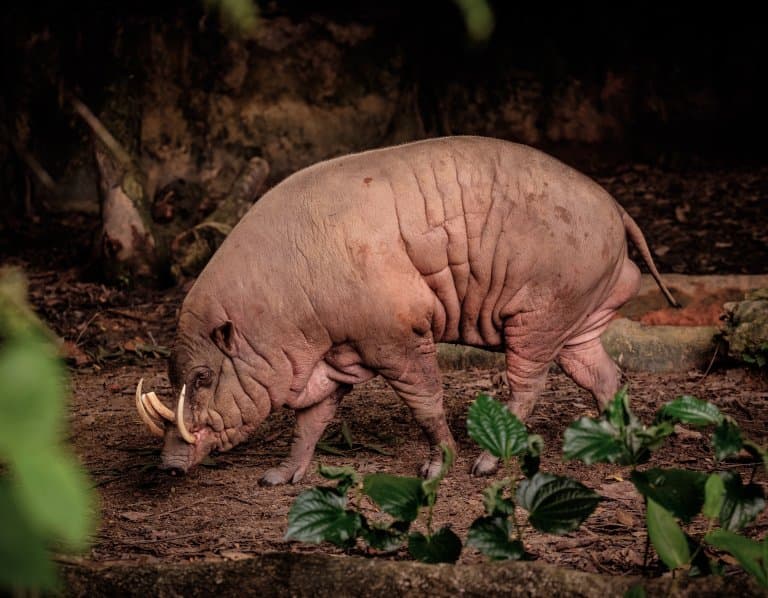
Babirusa are proto pigs, in that they represent one of the oldest pig lineages still on the market. They branched off from the warthog line about 30 million years ago and apparently got the raw end of the deal.
The tusks of these pigs protrude from canines in the upper jaw, and in males, can burst through the flesh of the face on their way out.
But more than this, the tusks curl up and over the face so grotesquely that they do, on some occasions, curve back to pierce the face of the poor pig sporting them a second time.
This is the evolutionary equivalent of choking on penis enlargement pills and a cruel joke of nature that should elicit deep sympathy for such an otherwise awesome animal. 4
2. Greater Adjutant
One of the biggest flying animals is also one of the least pretty, but if you’re ever close enough to one to see it blink its beady little eyelashes at you, you’ll notice it also has a sort of ugly sweetness, as you might find in a pug or the occasional freshly-birthed human.
The greater adjutant is one of the largest storks, and like the Maribou, has an outstanding wingspan of over 2.5 meters, enough to cast an ominous shadow over the garbage piles they love to feed among.
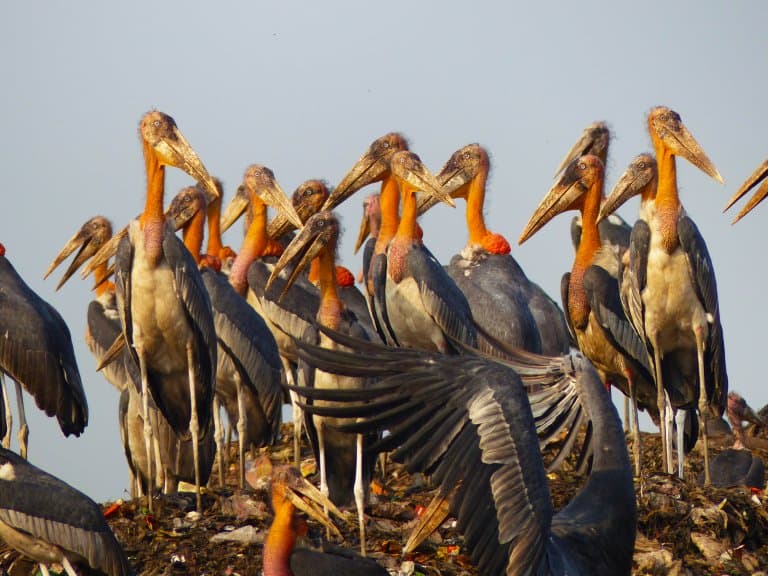
This dietary preference has led to a very sensible adjustment in the bird’s DNA to reduce the amount of contact surface on the head and neck that might absorb disgusting toxic sludge and other garbage nasties.
They’ll scavenge more or less anything, including charred human corpses, and sport an equally bald, empty neck scrotum as a sign of their maturity and virility during mating season. This pouch is connected to the air ducts and somewhat inflatable, which makes it even more upsetting but the ladies seem to love it.
1. Ruppell’s Griffon Vulture
Like Captain Picard, the head of the bald animals should be a dignified representative of their kind. One that carries a flag, sends a clear message and has an air of power, resilience, and vulnerability.
And is bald.
The Ruppell’s Griffon vulture is all these things.
If the Harpy Eagle is the eaglest eagle, the Ruppell’s vulture must be a top contender for the vulturest vulture.
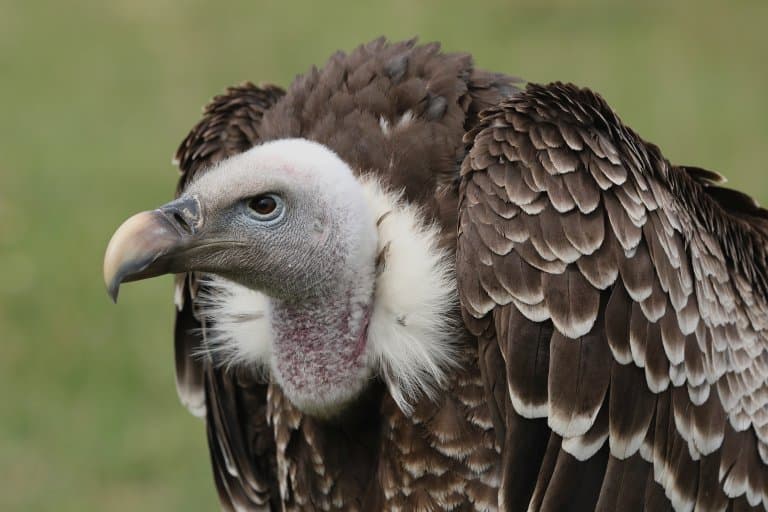
This large raptor is a high-altitude specialist from Northern and Eastern Africa and is a true carrion-feeder. This is a species thought to be clairvoyant in some cultures, and follows herbivore migrations, just watching, waiting, for one of the old or sick to stumble.
They sport a terrifying glare with prominent brow ridges shading piercing yellow eyes behind a powerful beak, often seen dripping with blood. Their hunched posture is typical of the genus and characteristically vulture-like, and while they’re generally silent stalkers when they get excited (usually by death) they release a horrifying screech that only the tree hyrax can beat.
Like the Adjutant, and like so many of their kind, these vultures have reduced feathers on their face and neck, allowing them to push their heads right up the rear opening of a recently deceased African herbivore to tear at the soft parts inside.
And like so many other vultures, these birds are critically endangered. Vultures are some of the most threatened birds on Earth, especially in Africa, as deliberate and inadvertent poisoning threatens to wipe out many species.
Diclofenac toxicity is a big problem, as is habitat conversion. And those superstitious cultures kill vultures on purpose to gain their powers by consuming their body parts.
The Ruppell’s griffon vulture is our chosen icon for all balding animals. One that balances raw nature with the desperate need for protection; commands respect; and is a humble mascot for the plight of so many animals we tend to think of only in terms of their looks. 5
Final Thoughts
That completes our list of some of the most unique and beautiful bald and hairless animals on the planet.
Away from the vanity of human day-to-day life, hair or the lack of it can serve many purposes in the animal kingdom, and even often be an aid to them as part of evolution.
What notable exceptions are we missing from our bald animals list?
Remember, naming isn’t always accurate in the animal kingdom. For example, bald eagle aren’t actually bald – they just have white feathered heads!.
Fact Sources & References
- Jacob Negrey (2023), “ASU study: Chimpanzees with more muscle, not more aggression, have higher testosterone“, Arizona State University.
- “A Hairless Baboon“, Reddit.
- Raymond Jansen et al (2020), “White-bellied pangolin Phataginus tricuspis“, Science, Society and Conservation.
- Tetrapodzoology (2010), “Babirusas can get impaled by their own teeth: that most sought-after of objects does exist! (babirusas, part VIII)“, Science Blogs.
- VIVIAN MCCALL (2015), “Why Africa’s Vultures Are “Collapsing Toward Extinction“, National Geographic.
